
How to Use KY-019 Relay module 1 channel: Examples, Pinouts, and Specs
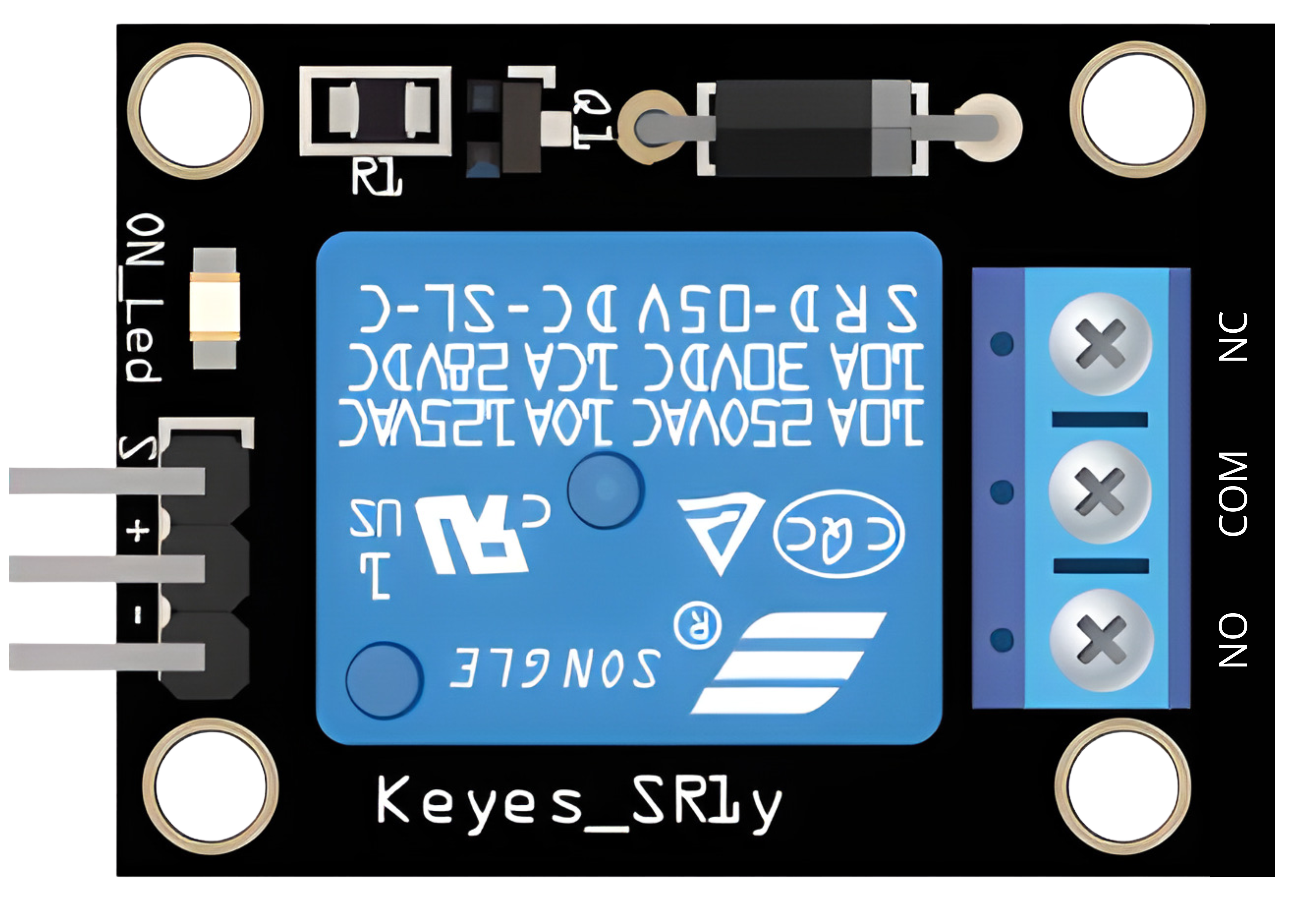
 Design with KY-019 Relay module 1 channel in Cirkit Designer
Design with KY-019 Relay module 1 channel in Cirkit DesignerIntroduction
A 1-Channel Relay Module is an electronic device that allows a low-power signal to control a much higher power circuit. It acts as a switch that can be controlled electronically. The module includes a relay, which is an electromechanical switch, along with components for signal amplification and isolation to ensure that the low-power control signal can operate the relay without interference. This module is commonly used in automation projects, home automation systems, and in applications where interfacing between low-level logic circuits and high-power devices is required.
Explore Projects Built with KY-019 Relay module 1 channel
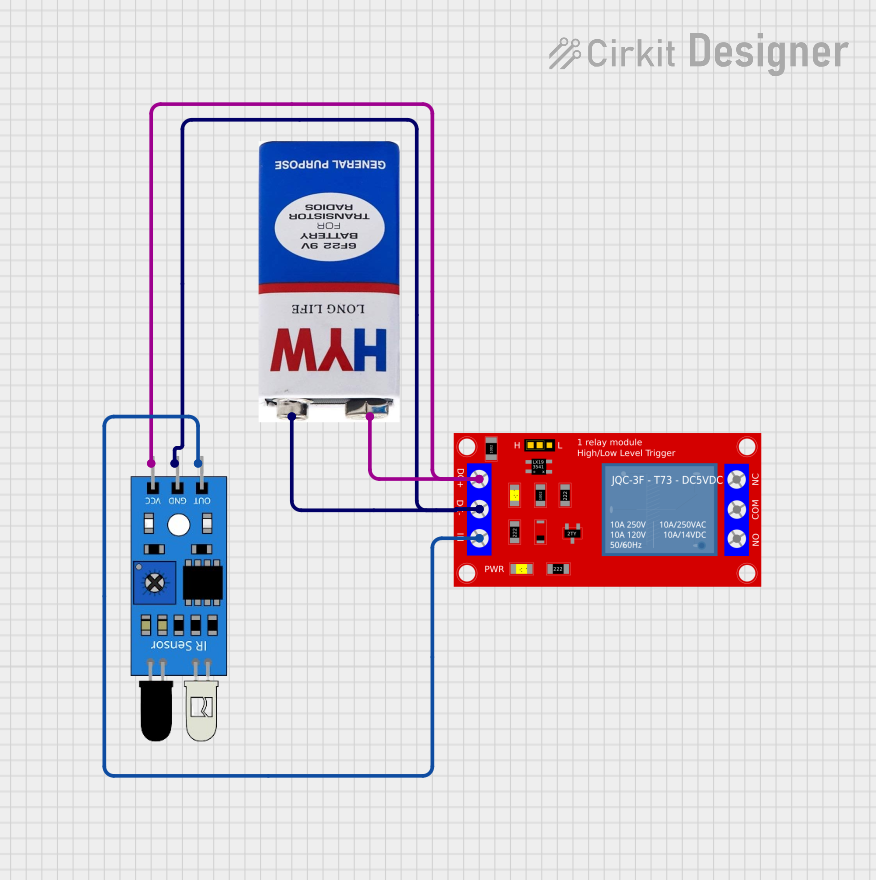
 Open Project in Cirkit Designer
Open Project in Cirkit Designer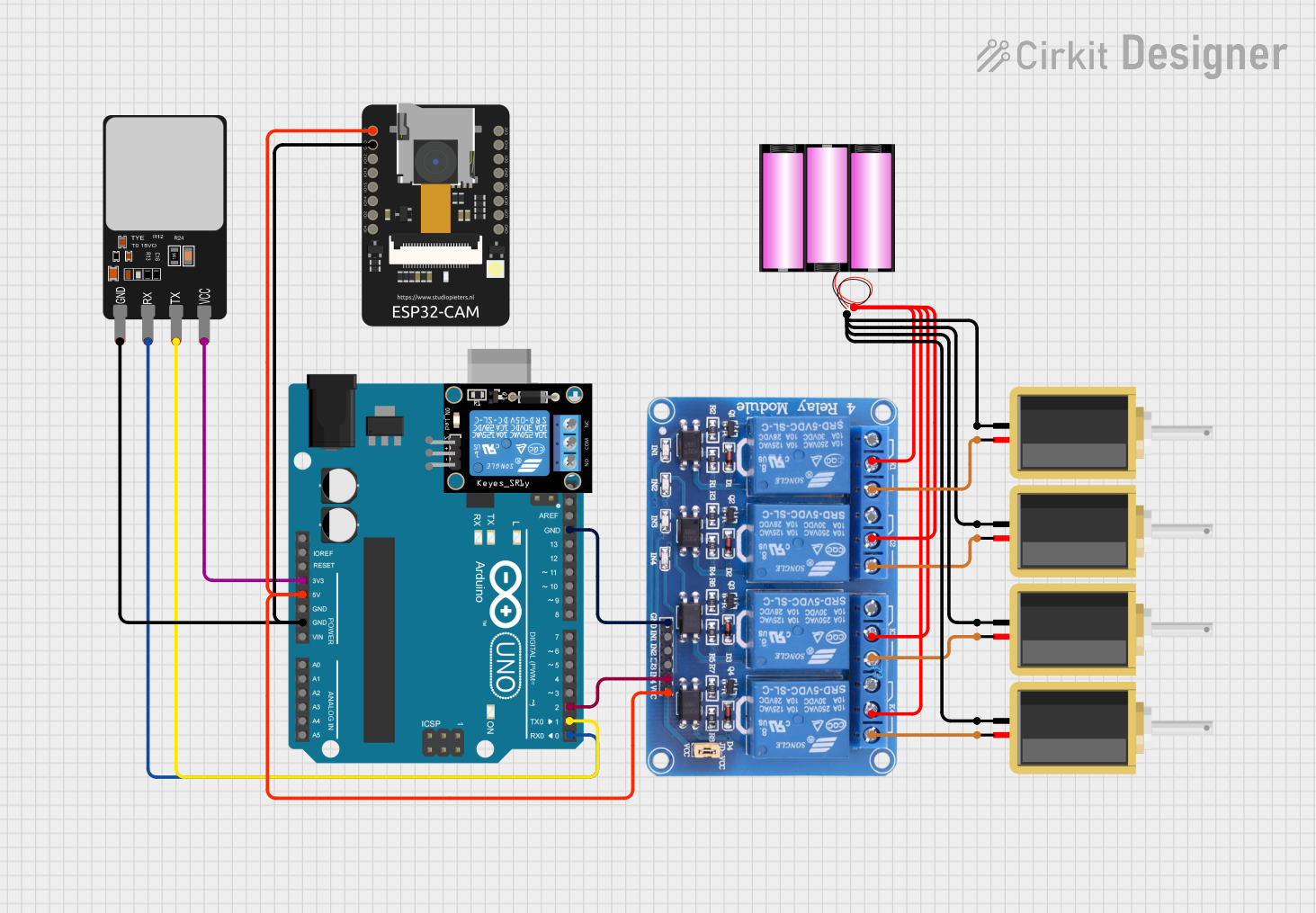
 Open Project in Cirkit Designer
Open Project in Cirkit Designer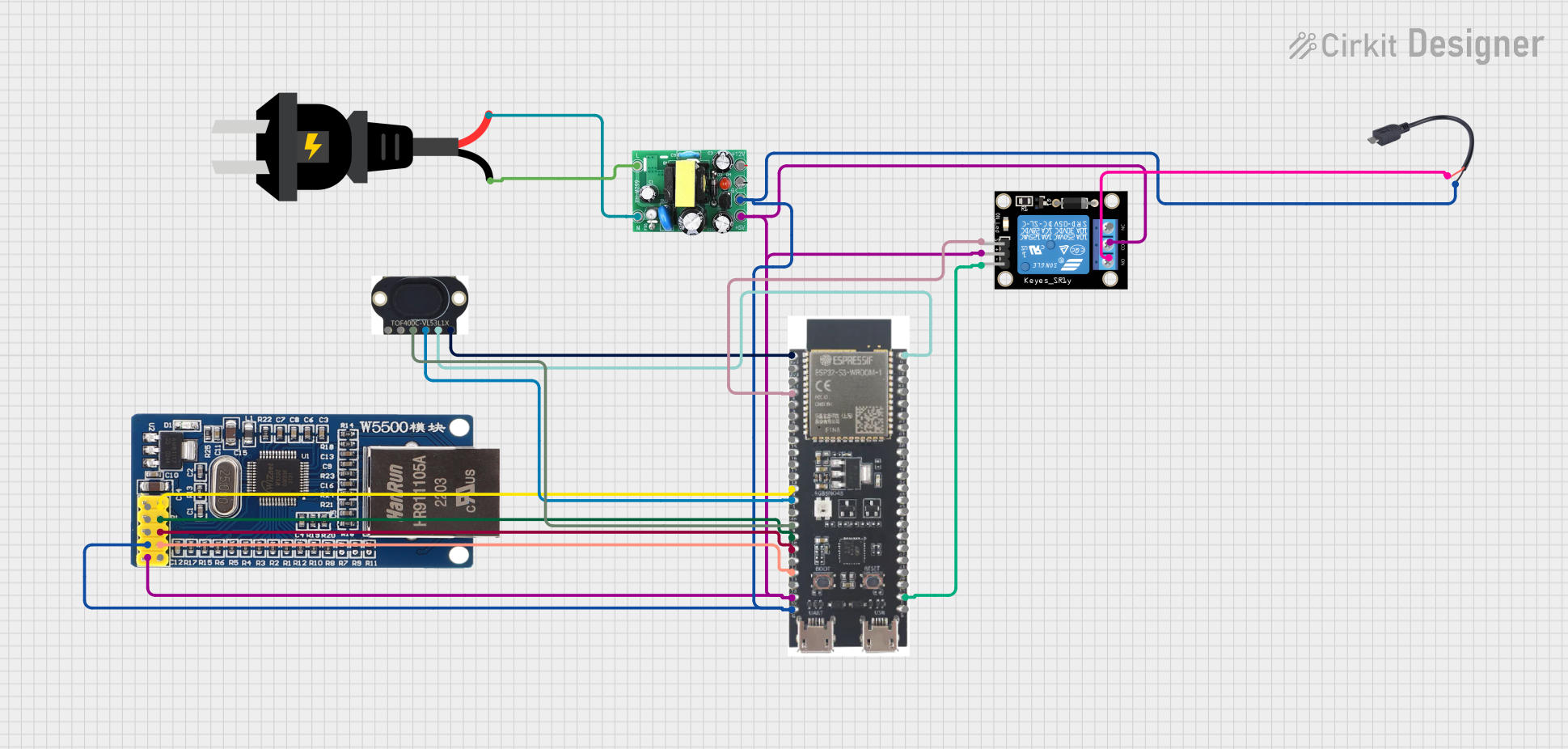
 Open Project in Cirkit Designer
Open Project in Cirkit Designer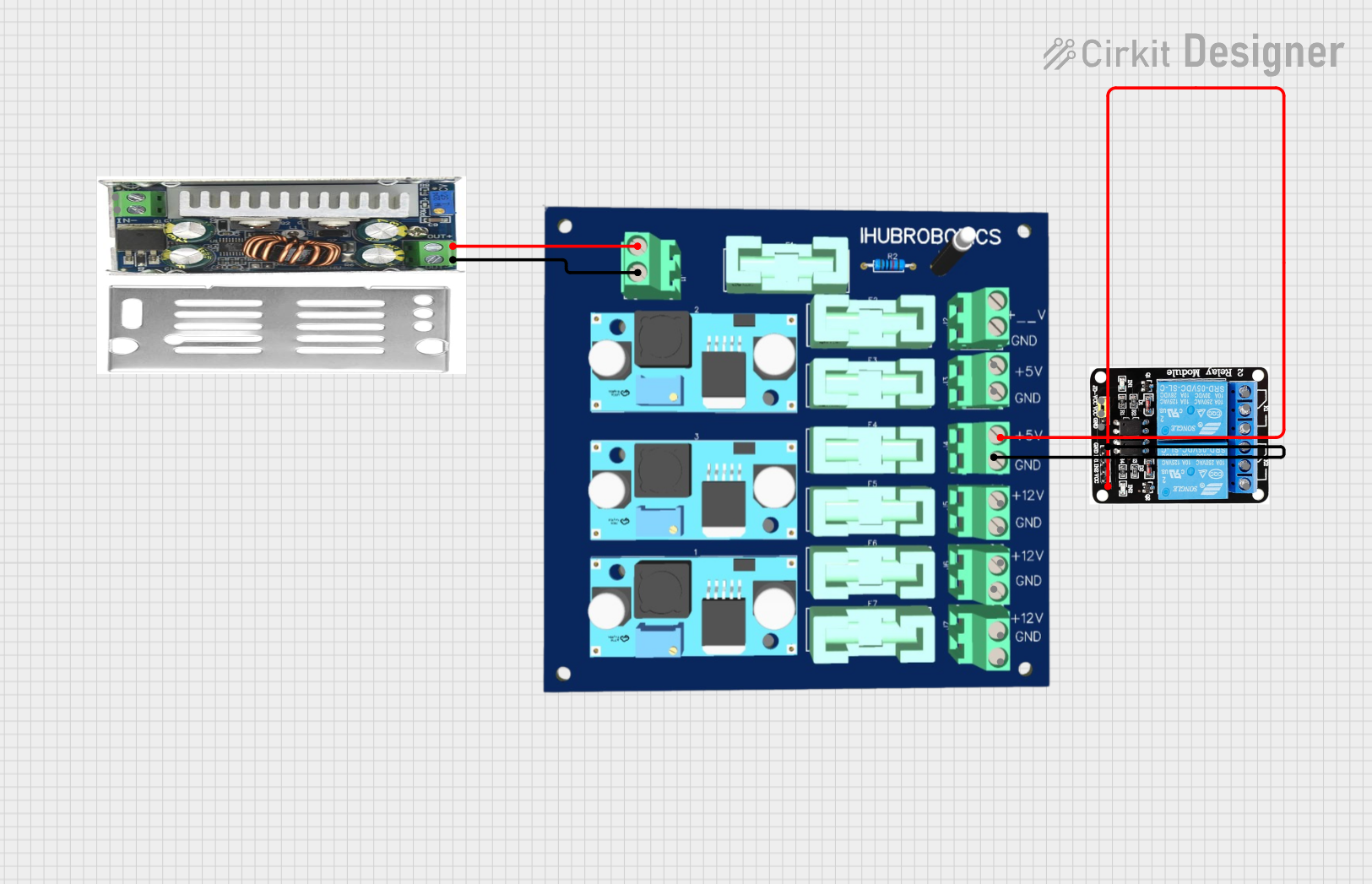
 Open Project in Cirkit Designer
Open Project in Cirkit DesignerExplore Projects Built with KY-019 Relay module 1 channel

 Open Project in Cirkit Designer
Open Project in Cirkit Designer
 Open Project in Cirkit Designer
Open Project in Cirkit Designer
 Open Project in Cirkit Designer
Open Project in Cirkit Designer
 Open Project in Cirkit Designer
Open Project in Cirkit DesignerCommon Applications and Use Cases
- Home automation (e.g., turning lights or appliances on/off)
- Industrial controls
- Automotive electronics
- Robotics
- Power supply control
Technical Specifications
Key Technical Details
- Operating Voltage: Typically 5V DC for the control signal
- Relay Voltage: AC 250V 10A / DC 30V 10A (maximum switching voltage and current)
- Trigger Current: 5mA (typical)
- Control Signal: TTL logic level from a microcontroller, such as an Arduino
Pin Configuration and Descriptions
| Pin | Description |
|---|---|
| VCC | Connect to the positive supply voltage (5V) |
| GND | Connect to the ground of the power supply |
| IN | Control signal input from the microcontroller |
| NO | Normally Open: Relay is disconnected by default, closes when activated |
| COM | Common: Connects to the circuit to be controlled |
| NC | Normally Closed: Relay is connected by default, opens when activated |
Usage Instructions
How to Use the Component in a Circuit
- Connect the VCC pin to a 5V power supply.
- Connect the GND pin to the ground of the power supply.
- Connect the IN pin to a digital output pin of a microcontroller.
- Connect the device you want to control to the NO or NC and COM pins, depending on whether you want the device to be powered when the relay is activated (NO) or deactivated (NC).
Important Considerations and Best Practices
- Ensure that the power ratings of the relay match the requirements of the controlled device.
- Do not exceed the maximum voltage and current ratings of the relay.
- Use a flyback diode when controlling inductive loads to prevent back EMF damage.
- Isolate the control circuit from the high-power circuit to prevent electrical noise and interference.
- Always ensure proper safety measures when dealing with high voltage or current.
Example Code for Arduino UNO
// Define the relay control pin
const int relayPin = 2;
void setup() {
// Set the relay pin as an OUTPUT
pinMode(relayPin, OUTPUT);
}
void loop() {
// Turn on the relay (activate the connected device)
digitalWrite(relayPin, HIGH);
delay(1000); // Wait for 1 second
// Turn off the relay (deactivate the connected device)
digitalWrite(relayPin, LOW);
delay(1000); // Wait for 1 second
}
Troubleshooting and FAQs
Common Issues Users Might Face
- Relay does not switch: Check the control signal and power supply connections.
- Intermittent operation: Ensure stable power supply and check for loose connections.
- Clicking sound but no action: Verify that the load does not exceed the relay's ratings.
Solutions and Tips for Troubleshooting
- Double-check wiring, especially the control signal and power supply.
- Measure the control signal voltage to ensure it is within TTL levels.
- Use a multimeter to check the continuity of the relay contacts in both states.
- Ensure that the code uploaded to the microcontroller is correct and that the correct pin is being used.
FAQs
Q: Can I control the relay module with a 3.3V signal? A: Some relay modules can be triggered with 3.3V, but it's essential to check the specifications of your specific module.
Q: Is it safe to control AC devices with a relay module? A: Yes, as long as the device's power requirements do not exceed the relay's ratings and proper safety precautions are taken.
Q: Can I use PWM to control the relay? A: No, relays require a stable HIGH or LOW signal to switch states. PWM is not suitable for relay control.
Remember to always follow safety guidelines when working with electronics, especially when controlling high-power devices.